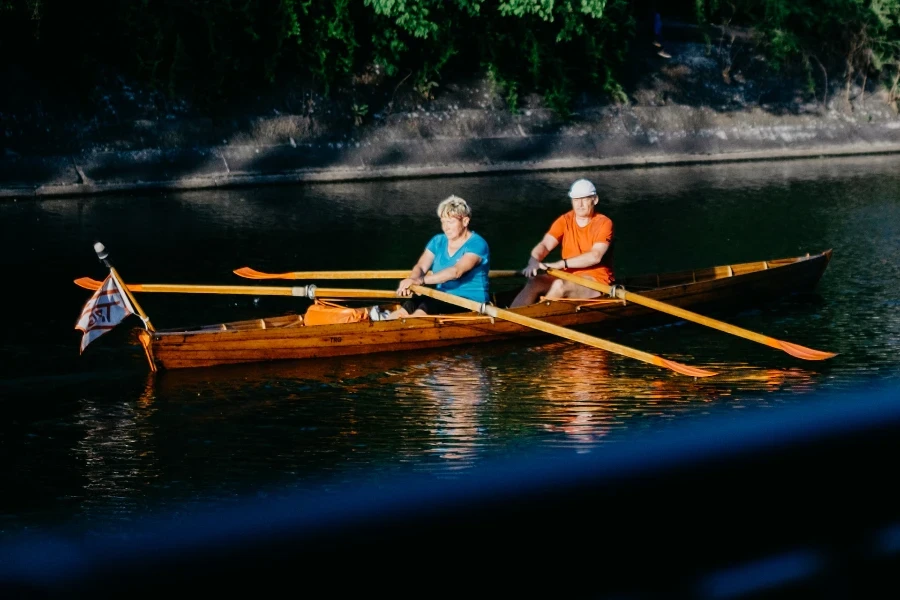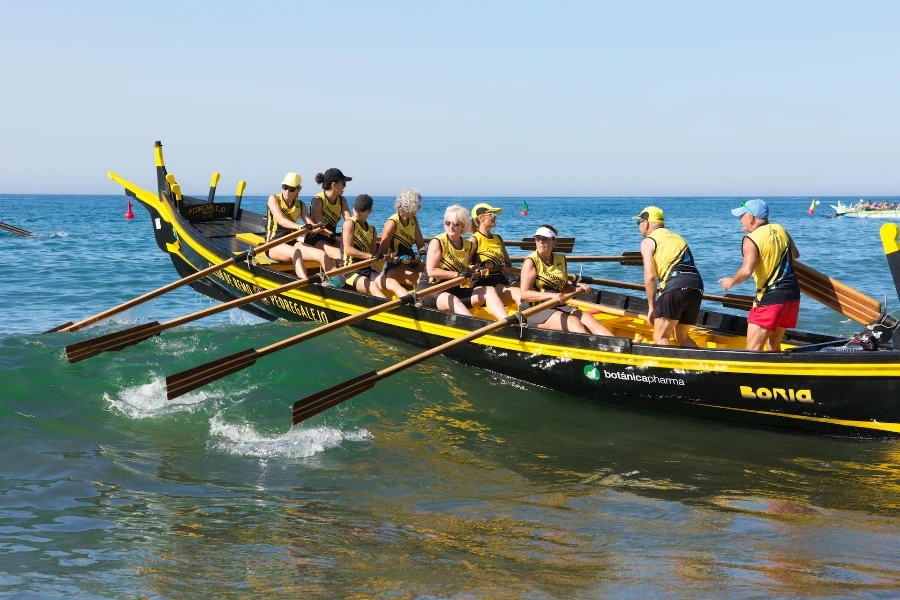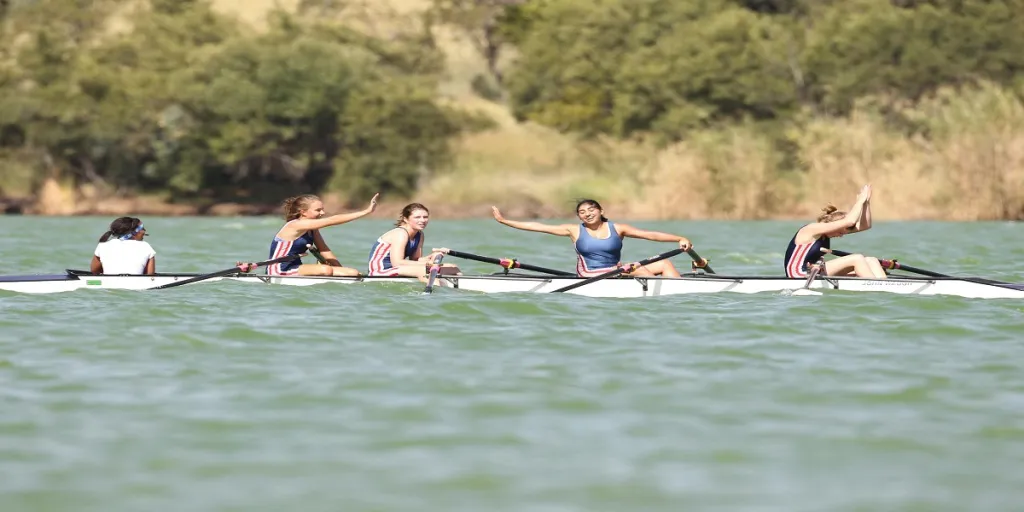Rowing boats are available in various styles, each with its own features, applications, advantages, and disadvantages. While some boats are made for leisure, others are built for athletic competitions. As a result, it is crucial to evaluate a few design elements that impact performance.
This article delves into some of the most critical aspects of rowing boat design and highlights the most important factors to consider in terms of safety, speed, and efficiency.
Table of Contents
The rowing boats market
Factors to consider when choosing a rowing boat
Design elements of rowing boats
To sum up
The rowing boat market
The rowing boat market is expected to grow at a compound annual growth rate (CAGR) of 3.8% to reach USD 1.6 billion by 2025. North America will account for the largest market share.
Rowing boats for recreational purposes are becoming more popular as more people seek cardio exercises. These boats are also well-known for their apprentice features and non-professional applications, which will help bolster the market segment.
The hospitality industry is also investing heavily, which will help expand the market further. Some of the top market players include Row Alden, Echo Rowing, Empacher, Rowing Yard Wiersma, Durham Boat Company, and Sykes Racing among others.
Factors to consider when choosing a rowing boat

There are several factors to consider in order to choose the best rowing boat. The choice of rowing boat will depend on the activity at hand, such as leisure or competition, whether the rowing will be done on a lake or seawater, and the required seating capacity.
Type of rowing boat
Flat water shells
As the name suggests, these rowing boats are great for steady and smooth waters where users can use their flatwater racing shells to sail through. They are also known as sculls and are best suited for experienced rowers. The flat water shells are light, narrow, and extremely long, measuring approximately 27 feet long, making them challenging to spin. They have sliding seats and outriggers normally built into the boat.
Open water shells
These boats are light, small, and fast and can be used in rougher waters. They are available in various designs for recreational use, ranging from slow and stable models to new designs with lengths of 24 feet or more and 12 to 14-inch maximum waterline beams. They weigh between 31.5 and 40 pounds and are made of fiberglass, kevlar, or carbon fiber.
Open-water boats can withstand challenging environments and are great for recreational use. Many leisure rowers use these boats for workouts, and they can be used in rougher waters when paired with flat water shells.
Furthermore, these shells are best suited for endurance competitions where the routes are measured in miles (between 5 and 30+) rather than meters, and stroke frequencies and speed are slightly lower to handle a broader range.
Traditional skiffs
Traditional skills are ideal for beginners and those who want to row for recreational purposes. Modern skiffs are lightweight, smaller, and more maneuverable than older rowing skiffs. Previously, the oar locks were attached to the gunwales, but now they are attached to the boat’s outriggers with sliding seat rigs. Long oars can be used because the sliding seat has a longer hand reach.
Rowing seats
Before selecting a rowing boat, one needs to consider the number of rowers and the seating capacity of the boat. There are a few terms to be aware of when rowing boats with rowers. The seat is used to identify the rowers. Seat number one is reserved for the rower in front of the boat, who will be the first to finish.
Number two is in front of the bow, followed by three, four, five, six, and seven. The most skilled rower with the best technique takes seat number one or the bow because their stroke establishes the rhythm and number of strokes per minute that the other rowers must follow.
Hull material
The performance of a rowing boat is influenced by its rigidity and lightness, which necessitates the use of high-tech materials such as kevlar, carbon fiber, and other types of blended materials.
Wood and composite are the most typical building materials used in the construction of rowing boats. Wood is more expensive than kevlar composites but more rigid. On the other hand, composite is more durable and controllable in terms of portability and maintenance.
Hull shape
If the width/length ratio is 1 to 4, hulls with a flat bottom provide good initial stability (stable when getting into the boat) and good final stability (stable when getting off the boat). Flat bottom boats can be quicker and easier to construct if one wants to build a rowing boat. However, they can be a little noisy when entering a chop as the bow hits the water.
On the other hand, hulls with a round bottom are more streamlined, have a curved shape, and move through the water easily and quietly. They frequently function as small sailing skiffs and are more stable when leaned to one side.
Design elements of rowing boats

Height and width
The width of the beam is an important consideration; a narrow waterline beam will make a boat unsteady, increasing the risk of passengers falling overboard. A boat with a broad waterline beam is more resistant to waves.
Another factor to consider is the space between rowlocks, as it will be difficult to handle the oars if they are too close together. On the other hand, if the rowlocks are too far apart, rowing will also be challenging. For rowboats that are narrow and quick in sheltered waters, outriggers can be installed to help separate the rowlocks.
The height of the freeboard is another element to consider when choosing a rowing boat. If the freeboard is too high, the boat will be caught by the wind, and the rower will struggle to control the boat in high winds.
Length
The rowing boat’s length must strike a good balance between the factors influencing its speed. A small boat will have limited speed, while a larger boat will have increased friction and a larger wet surface area. As a result, a minimum length of 16 feet is advised. However, balancing a boat longer than the recommended length can be tricky, even if the boat is quicker than the recommended speed.
Weight
Weight can be placed on the bow of the rowboat or further forward to provide a second rowing position. Because of its weight, the rowboat has both advantages and disadvantages. A light boat, for example, will begin to slow down as soon as the oar stroke is completed.
A heavier boat, on the other hand, is more likely to continue moving forward. Modern rowboats are significantly lighter than traditional clinker-built rowboats.
Trim
Trim is the way a boat sits on the water. Each boat hull is constructed to sit in the water in a specific way, and it is more difficult to row if the boat is stern down or bow down. Bow down makes the boat unstable and challenging to maneuver, whereas stern down makes rowing more difficult as if you are dragging weight.
However, simple modifications to passenger seating or gear storage will account for the trim. Many beginners overlook the trim, making rowing much more difficult.
To sum up
As previously stated, selecting the ideal rowing boat is not easy because many factors must be considered, including the type of activity, the number of rowers, and the design elements of the rowing boat. The type of rowing movement, i.e., whether for recreation or competition, is also an important consideration. Nonetheless, by following the points outlined here, buyers can be informed of the key factors to consider when choosing a rowing boat.




